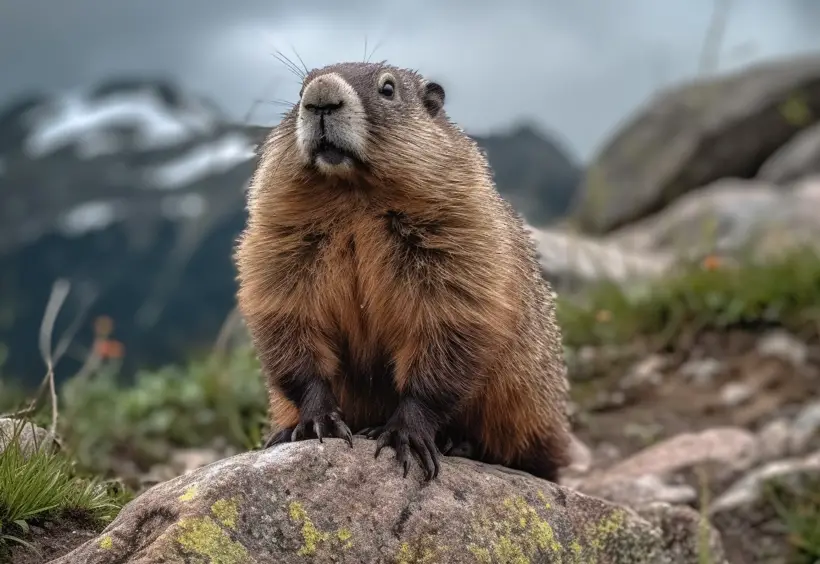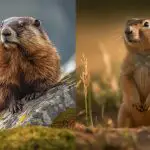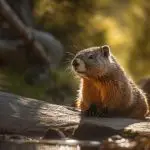What Does a Marmot Look Like? Identifying Marmot Species
Marmots are one of the most popular types of rodents, also known as ground squirrels, known for their unique features and distinct look. The animals are found in several parts of the world, particularly in areas surrounding North America and Eurasia. There are several marmot species available. So identifying a specific species or just the rodent, in general, can be tricky.
The animals typically reside in alpine and subalpine habitats and hibernate for a significant time of the year. Identifying marmots is highly important to understand their ecological contribution. It is also essential to ensure the proper conservation of wildlife.
In this guide, we will talk about the features and identification of the animal and how you can identify the species easily. We will also discuss a few factors related to the topic. So, continue the guide till the end!
What Does a Marmot Look Like? – Physical Characteristics of Marmots
As we mentioned earlier, Marmots are a popular type of rodent found in several regions around the globe. Typically, there are about 15 different types of marmots in the world.

Let us take a look at the features to guide you through the process of identifying marmots by their physical characteristics.
Body Shape and Size
The body of the marmot is cylindrical. They have a heavy build with a sturdy body that helps them dig through the ground easily. Their large body makes sure that they can move through rocky and mountainous terrains without any trouble.
If we talk about the size of the animal, its length typically varies between 12 to 28 inches or more, depending on the species of rodent. Typically, the weight of this wildlife animal varies between 1 pound to 40 pounds or more.
Fur Color and Texture
Marmots live in alpine or subalpine habitats where the temperature can often be harsh. To survive the cold and harsh environments, they have thick fur, which helps to keep them warm. The color of the fur is usually brown or gray, but some species have patches of white on their body.

Not only that, but the texture of the fur also varies depending on the species. Some species, such as the yellow-bellied marmots, have smooth and sleek coats, while others, such as the Olympic marmot, have shaggy and long fur.
Tail Length and Shape
Marmots have bushy tails similar to the tail of a squirrel. The length of the tail is quite short and is usually about one-third of the length of the body. Typically, the length of the tail varies between 4 to 12 inches or more. They use their short and bushy tails to communicate with other species of rodents.
Ears and Eyes
Marmots have large eyes, which are placed on the sides of their skulls. The positioning of the eyes allows the animal to scan and see a wide range of areas around them.
This helps them to stay alert and find food easily. If we talk about the ears, marmots have round ears, which are usually covered with fur.
Whiskers and Teeth
The teeth of these animals are quite sharp. The teeth of the marmots continue to grow at a rapid rate, and the length can go up to several centimeters, depending on the species.
With sharp front teeth, they can easily gnaw and chew on vegetables, plants, and so on. Not only that, but these teeth also help them to dig easily.
Whiskers are an essential part of the animal body. The whiskers on the face are long and stiff. These help them to navigate through their surroundings easily and are very sensitive.
Claws and Paws
The marmots live in the wild and have strong claws and paws that help them survive in their habitats. Their strong claws make it easier for them to dig under rocks and through the ground easily. These strong claws and paws also help them for climbing.
Identifying Marmots By Species
Every marmot species has its physical characteristics. These characteristics allow the rodents to adapt to their surroundings easily and survive without much trouble. The most common species are yellow-bellied marmot, hoary marmot, Vancouver Island marmot, etc.

Here are a few key pieces of information about these species’ wildlife identification.
1. Yellow-Bellied Marmot
The Yellow-Bellied Marmot, as the name suggests, has a yellowish patch on its belly. This species is typically found in the alpine habitats of western North America. It is one of the largest and most common species, and its length varies between 18 to 24 inches, weighing up to 11 pounds.

These animals usually have a reddish-brown or gray coat of fur on their body. Not only that, but they have short, bushy tails paired with large teeth and strong claws.
2. Hoary Marmot
Similar to the yellow-bellied marmot, the hoary species is also found in regions of western North America. It is one of the largest species of their kind found in nature. Their weight is typically heavier compared to the other species and can weigh up to 22 pounds, with lengths varying between 24 to 32 inches.

These species have long and shaggy fur. And it is typically gray or brown. On top of that, there is a distinctive white patch of fur on the chest of the Hoary marmot.
3. Vancouver Island Marmot
Another marmot species of marmot is the Vancouver Island marmot. Their type is critically endangered and is found only on Vancouver Island in Canada. These species are typically smaller compared to other types and usually weigh about 8.8 pounds. However, the length of this marmot species ranges between 26 to 29 inches.

With a short, bushy tail, they have smooth and sleek fur, which is usually brown. This type of ground animal usually has a white patch of fur on the nose.
How to Distinguish Marmots From Other Rodents?
Marmots share quite a few characteristics with other rodent animals. These include squirrels, rats, and so on. However, several key differences help people distinguish marmots from other rodents.
According to rodent classification, marmots are typically larger compared to squirrels and other rodents. Their fur color is also quite different from the other rodent species, and the texture is also different, depending on the species and type.

These rodents also have a cylindrical body shape with rounded ears covered with fur. On the other hand, other species typically have pointed ears on their head.
In terms of behavior and mammal anatomy, they hibernate during the colder months to survive harsh environments. The marmots dig holes into the ground and create tunnels where they store food for winter and seek shelter.
If you’re curious about the diet of marmots, you can check out our article on what do marmots eat. This article provides an in-depth look at the food habits of marmots in their natural habitat. Additionally, if you’re wondering how to keep marmots away from your yard or garden, our article on how to get rid of marmots offers several effective strategies for humane removal.Conclusion
Marmots are a popular rodent species, and there are about 15 species of them in nature. This animal belongs to the same group as squirrels, but there are several distinctive differences. Now you know what a marmot looks like, which will help you to identify one easily.
Proper wildlife identification is essential to get a clear idea about the conservation, ecology, and behavior of the marmots. This is because the animals are losing their habitat to climate loss, deforestation, etc. Further research on the ground animal can help to identify their role in the ecosystem and know more about their lifestyle.




